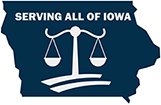Last Updated: 1/4/2023
Many personal injury cases are resolved through negotiations with an insurance company. But sometimes the dispute necessitates alternative means of reaching an agreement, which can help avoid taking the case all the way to trial. Learn the types of alterative dispute resolutions that claimants might utilize and how they function.
Arbitrating a Personal Injury Case
Most people want to avoid litigation if possible. One way is through arbitration, which in some ways is similar to a courtroom hearing but with fewer rules surrounding the use of evidence.
An arbitrator:
- reviews the facts and evidence;
- listens to testimony from witnesses; and
- then makes a final decision.
It is less costly than litigation and usually takes less time. However, arbitration can be binding or non-binding, meaning the arbitrator's decision will be final or the parties may choose not to accept the decision, respectively.
Both sides have to agree on who will serve as the arbitrator. The hearing can be held in virtually any setting, which usually makes it more convenient for everyone. At the arbitration hearing, both parties will present their side. There may or may not be opening and closing statements.
Facts are established through evidence, which could include:
- tangible items;
- medical records;
- pictures;
- video footage; and
- other pertinent documentation.
Witnesses provide testimony and are cross-examined. It could be an individual who observed the incident/accident causing injury or it may be an expert (e.g., medical expert, accident reconstruction).
Mediating a Personal Injury Case
An even less formal method of reaching a resolution is through mediation. It’s more commonly used in personal injury cases and again, not only avoids litigation but saves time, money and even stress.
The mediator is an unbiased third party who, unlike an arbitrator, doesn’t make a decision or ruling. In fact, the mediator doesn’t even give his/her opinion. The mediator's job is to allow both parties to share their sides of the matter and then guide them toward an agreement that is mutually satisfactory.
In fact, the mediator may help both parties to realize that they agree on certain elements of the case. Then helps the parties bridge their differences wherever possible and work toward a resolution that is fair for everyone.
Most mediation starts with both parties meeting together in one room. Then the mediator will take each party to a separate room. Offers, demands, questions and requests may go back and forth as the mediator moves from one party to the next.
Oftentimes it requires some give and take. In fact, most people who mediate a personal injury case should expect to make some compromises. Of course, if the matter cannot be resolved then it may have to go to trial.
Pros and Cons of Alternative Dispute Resolutions in a Personal Injury Case
Most of the benefits have already been mentioned: it can take less time, money and hassle. Parties may approach these alternative means of resolving a dispute in a calmer and more rational manner, as litigation can sometimes stir up emotions.
Also, with mediation the parities are more involved in the decision-making process, allowing them to have more say in the final outcome. If the case goes to trial and the other side is victorious, the injured person could end up with nothing whereas mediation allows both sides to reach an agreeable resolution.
But it’s also important to consider some of the cons. The parties may spend money to resolve the dispute but it does not produce any results. So more funds must be spent on litigating the case in addition to the alternative dispute resolution.
To better understand the differences in these alternative dispute resolutions and if they might be advantageous, contact an attorney at the Miley Legal Group in Clarksburg. Call us today to set up your consultation – 304-931-4088 or contact us online.


